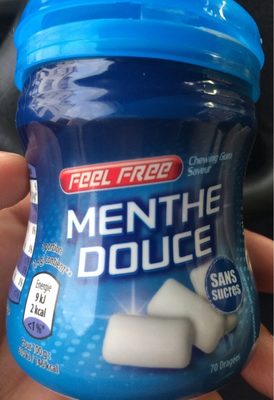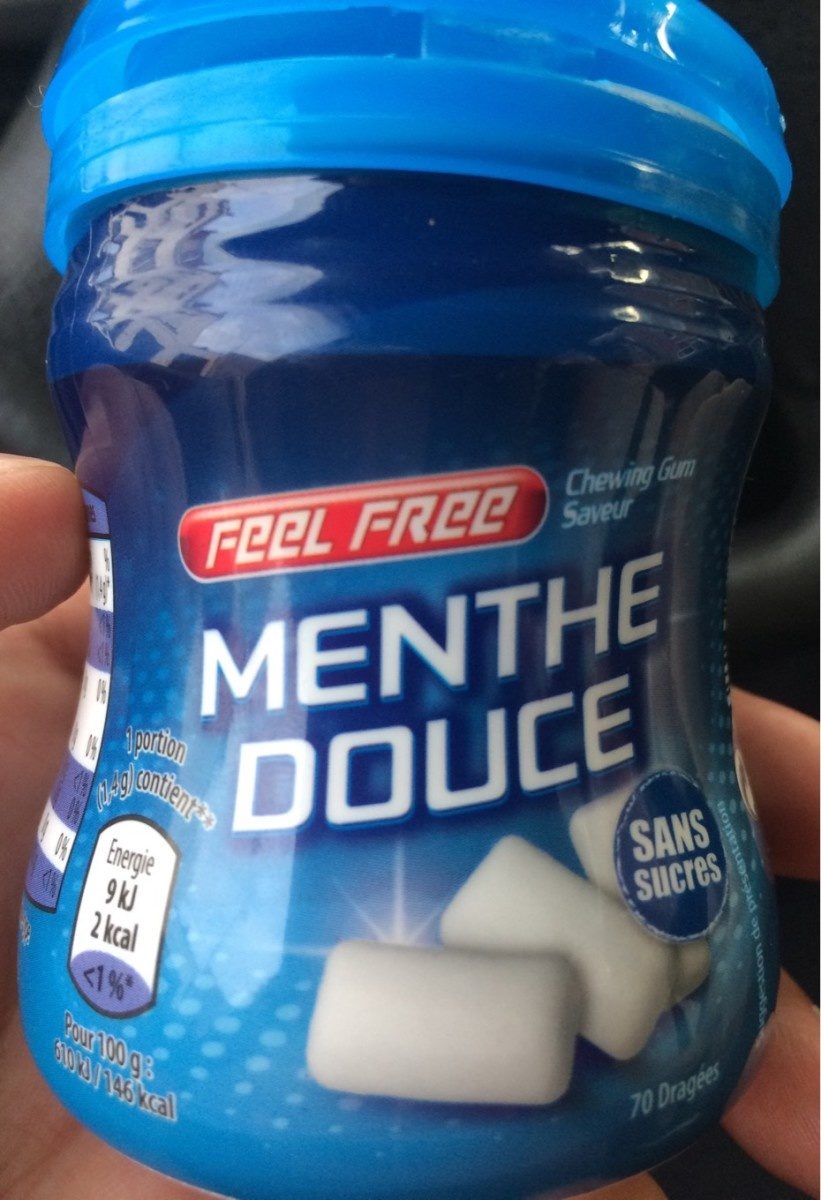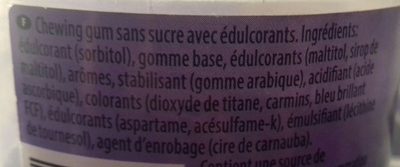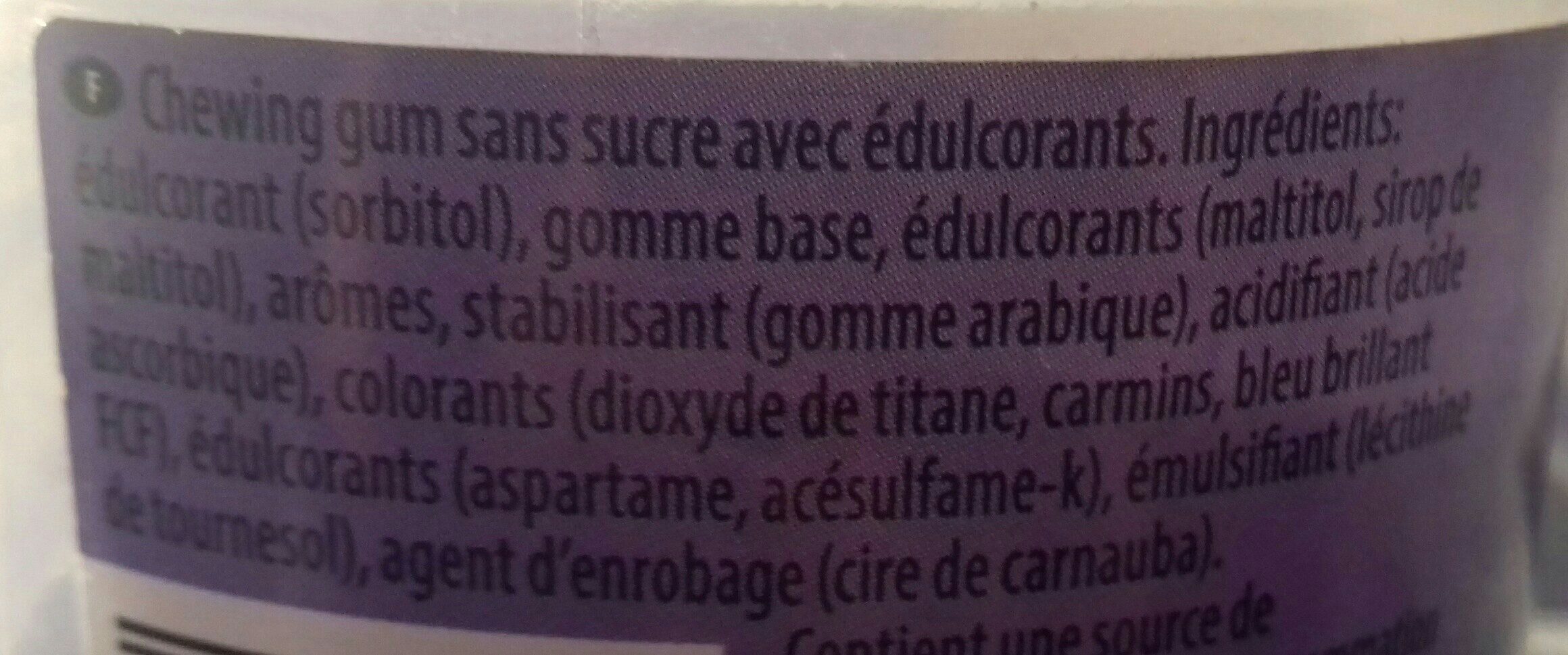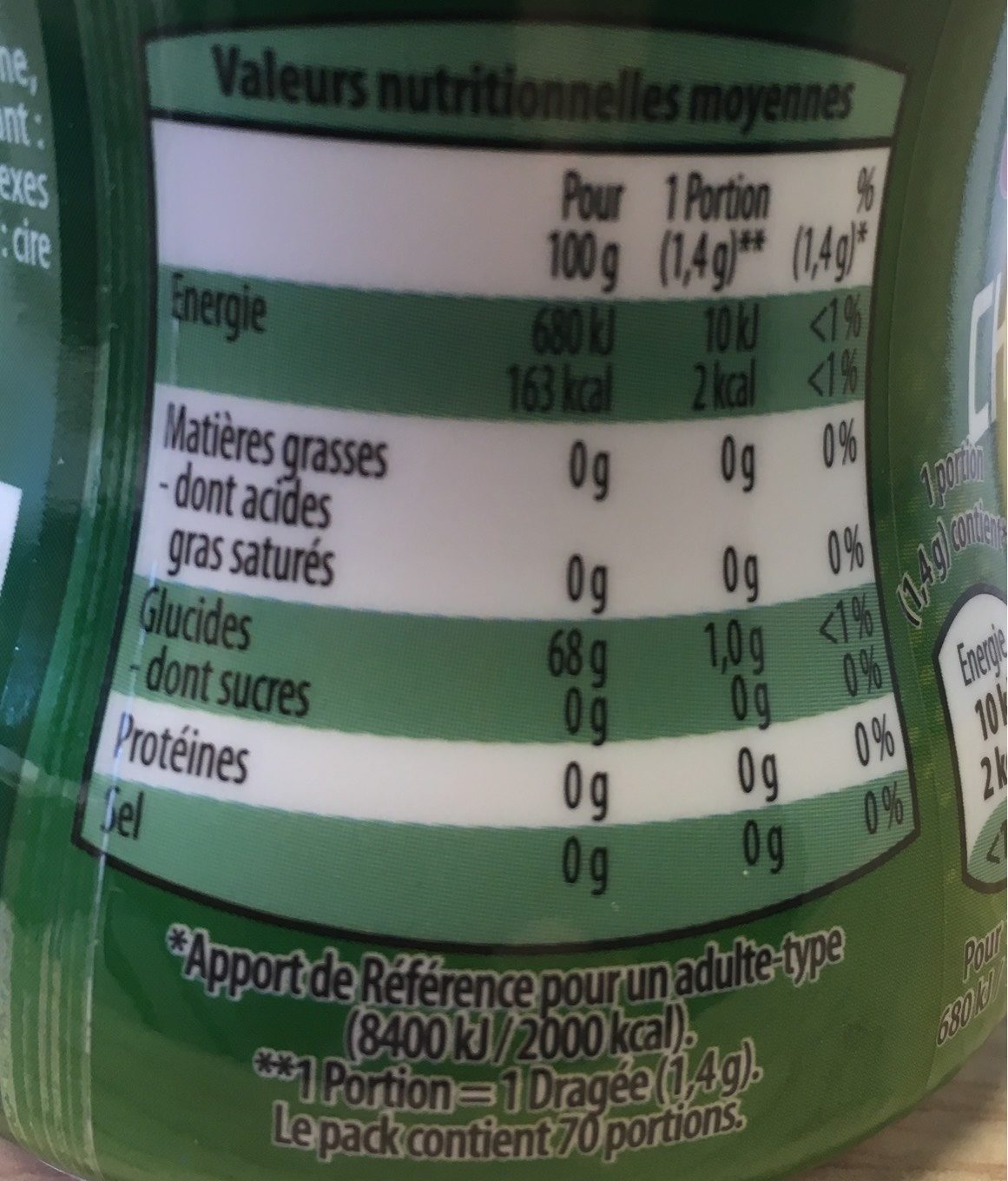Chewing-gum saveur menthe fraîche - Feel Free - 98 g e
Ambiguous barcode: This product has a Restricted Circulation Number barcode for products within a company. This means that different producers and stores can use the same barcode for different products.
×
This product page is not complete. You can help to complete it by editing it and adding more data from the photos we have, or by taking more photos using the app for Android or iPhone/iPad. Thank you!
×
Barcode: 26038155
Quantity: 98 g e
Brands: Feel Free
Categories: Snacks, Sweet snacks, Confectioneries, Chewing gum, Sugar-free chewing gum
Labels, certifications, awards:
Low or no sugar, Contains a source of phenylalanine, Green Dot, No sugar, With sweeteners
Countries where sold: France
Matching with your preferences
Environment
Packaging
Transportation
Report a problem
Data sources
Product added on by steff75
Last edit of product page on by naruyoko.
Product page also edited by beniben, kiliweb, ludo1, openfoodfacts-contributors, packbot, quechoisir, segundo, yuka.R0wwNk1LRVpwTlVrcGRnOHBDbk05OUF0bTdtQ2RIdXlKdkVmSVE9PQ, yuka.R2FvUFNZOEVvUGNrbHNjZXp6TGw1L2hmeTVtS1RYaVVOTWtYSWc9PQ, yuka.R3FBTUQ2UXFvL2tWa3NJY3B5S0ozb3h0N0ovMldVK0lBZm9WSWc9PQ, yuka.V0tWUUxvc1ovY2tBZ2RnRzBDajYxZWgybWJpbFR6enVDOUlvSVE9PQ, yuka.VExJbkVZVW9wdWtBbS9jWTR5alZ3ZkY0M2FLdmVUMm9Oc01PSVE9PQ, yuka.VktNcUFMbGFoUDgwcGRzRjN4SFpvZGhreVpHWkJIbTJjdW9CSVE9PQ, yuka.WEwxZklyOWErUHdncDg4ZDVEcU0rT3BNNThXclczcTBPOFZCSVE9PQ, yuka.WFlJUkVMMEErOU1YbzlvRjN5cU8zSXh6LzRhUlZtT2VPOEF0SVE9PQ, yuka.WUlBRkVQc0Q5LzFWblBjRjdqclh4ZTVmd0pHRGJXZU5EUFFKSVE9PQ, yuka.WW9ZeEU3UlluY2tGbHRnODF6RDF4dFF1K0xMeWVEL3ZLY29zSVE9PQ, yuka.WktCWU00Z2dpY1pTdjlzYndFUDJ5T3AxK3B1alpEL3VDK2tSSWc9PQ, yuka.Wm9BZEg1OHVuZmsxeHZZOHAweUkvUGxvOWJ5NFFYMkxOUEUrSVE9PQ, yuka.WnY1YUY2NExncUFCcThZbXBUS0twNE5wNDhXS1lFQ1JJZEF3SUE9PQ, yuka.YVBCYktaa3Nxc0k3Z2NjWnBFcUl3UDFmMW9lMVl6dTZNc3dySVE9PQ.
